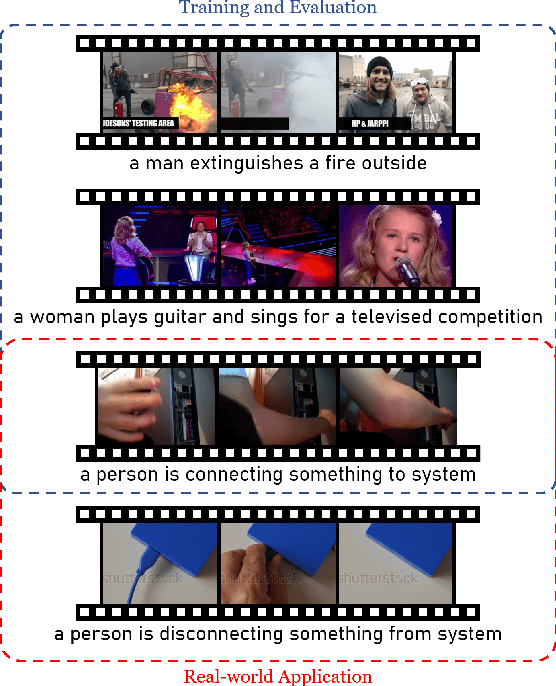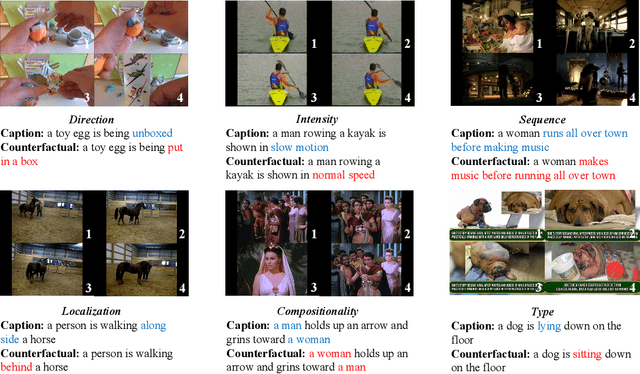Rundong Gao
LaDiC: Are Diffusion Models Really Inferior to Autoregressive Counterparts for Image-to-Text Generation?
Apr 16, 2024



Abstract:Diffusion models have exhibited remarkable capabilities in text-to-image generation. However, their performance in image-to-text generation, specifically image captioning, has lagged behind Auto-Regressive (AR) models, casting doubt on their applicability for such tasks. In this work, we revisit diffusion models, highlighting their capacity for holistic context modeling and parallel decoding. With these benefits, diffusion models can alleviate the inherent limitations of AR methods, including their slow inference speed, error propagation, and unidirectional constraints. Furthermore, we identify the prior underperformance of diffusion models stemming from the absence of an effective latent space for image-text alignment, and the discrepancy between continuous diffusion processes and discrete textual data. In response, we introduce a novel architecture, LaDiC, which utilizes a split BERT to create a dedicated latent space for captions and integrates a regularization module to manage varying text lengths. Our framework also includes a diffuser for semantic image-to-text conversion and a Back&Refine technique to enhance token interactivity during inference. LaDiC achieves state-of-the-art performance for diffusion-based methods on the MS COCO dataset with 38.2 BLEU@4 and 126.2 CIDEr, demonstrating exceptional performance without pre-training or ancillary modules. This indicates strong competitiveness with AR models, revealing the previously untapped potential of diffusion models in image-to-text generation.
Towards Multimodal Video Paragraph Captioning Models Robust to Missing Modality
Mar 28, 2024



Abstract:Video paragraph captioning (VPC) involves generating detailed narratives for long videos, utilizing supportive modalities such as speech and event boundaries. However, the existing models are constrained by the assumption of constant availability of a single auxiliary modality, which is impractical given the diversity and unpredictable nature of real-world scenarios. To this end, we propose a Missing-Resistant framework MR-VPC that effectively harnesses all available auxiliary inputs and maintains resilience even in the absence of certain modalities. Under this framework, we propose the Multimodal VPC (MVPC) architecture integrating video, speech, and event boundary inputs in a unified manner to process various auxiliary inputs. Moreover, to fortify the model against incomplete data, we introduce DropAM, a data augmentation strategy that randomly omits auxiliary inputs, paired with DistillAM, a regularization target that distills knowledge from teacher models trained on modality-complete data, enabling efficient learning in modality-deficient environments. Through exhaustive experimentation on YouCook2 and ActivityNet Captions, MR-VPC has proven to deliver superior performance on modality-complete and modality-missing test data. This work highlights the significance of developing resilient VPC models and paves the way for more adaptive, robust multimodal video understanding.
VITATECS: A Diagnostic Dataset for Temporal Concept Understanding of Video-Language Models
Nov 29, 2023



Abstract:The ability to perceive how objects change over time is a crucial ingredient in human intelligence. However, current benchmarks cannot faithfully reflect the temporal understanding abilities of video-language models (VidLMs) due to the existence of static visual shortcuts. To remedy this issue, we present VITATECS, a diagnostic VIdeo-Text dAtaset for the evaluation of TEmporal Concept underStanding. Specifically, we first introduce a fine-grained taxonomy of temporal concepts in natural language in order to diagnose the capability of VidLMs to comprehend different temporal aspects. Furthermore, to disentangle the correlation between static and temporal information, we generate counterfactual video descriptions that differ from the original one only in the specified temporal aspect. We employ a semi-automatic data collection framework using large language models and human-in-the-loop annotation to obtain high-quality counterfactual descriptions efficiently. Evaluation of representative video-language understanding models confirms their deficiency in temporal understanding, revealing the need for greater emphasis on the temporal elements in video-language research.
FETV: A Benchmark for Fine-Grained Evaluation of Open-Domain Text-to-Video Generation
Nov 08, 2023



Abstract:Recently, open-domain text-to-video (T2V) generation models have made remarkable progress. However, the promising results are mainly shown by the qualitative cases of generated videos, while the quantitative evaluation of T2V models still faces two critical problems. Firstly, existing studies lack fine-grained evaluation of T2V models on different categories of text prompts. Although some benchmarks have categorized the prompts, their categorization either only focuses on a single aspect or fails to consider the temporal information in video generation. Secondly, it is unclear whether the automatic evaluation metrics are consistent with human standards. To address these problems, we propose FETV, a benchmark for Fine-grained Evaluation of Text-to-Video generation. FETV is multi-aspect, categorizing the prompts based on three orthogonal aspects: the major content, the attributes to control and the prompt complexity. FETV is also temporal-aware, which introduces several temporal categories tailored for video generation. Based on FETV, we conduct comprehensive manual evaluations of four representative T2V models, revealing their pros and cons on different categories of prompts from different aspects. We also extend FETV as a testbed to evaluate the reliability of automatic T2V metrics. The multi-aspect categorization of FETV enables fine-grained analysis of the metrics' reliability in different scenarios. We find that existing automatic metrics (e.g., CLIPScore and FVD) correlate poorly with human evaluation. To address this problem, we explore several solutions to improve CLIPScore and FVD, and develop two automatic metrics that exhibit significant higher correlation with humans than existing metrics. Benchmark page: https://github.com/llyx97/FETV.
Holistic Sentence Embeddings for Better Out-of-Distribution Detection
Oct 14, 2022



Abstract:Detecting out-of-distribution (OOD) instances is significant for the safe deployment of NLP models. Among recent textual OOD detection works based on pretrained language models (PLMs), distance-based methods have shown superior performance. However, they estimate sample distance scores in the last-layer CLS embedding space and thus do not make full use of linguistic information underlying in PLMs. To address the issue, we propose to boost OOD detection by deriving more holistic sentence embeddings. On the basis of the observations that token averaging and layer combination contribute to improving OOD detection, we propose a simple embedding approach named Avg-Avg, which averages all token representations from each intermediate layer as the sentence embedding and significantly surpasses the state-of-the-art on a comprehensive suite of benchmarks by a 9.33% FAR95 margin. Furthermore, our analysis demonstrates that it indeed helps preserve general linguistic knowledge in fine-tuned PLMs and substantially benefits detecting background shifts. The simple yet effective embedding method can be applied to fine-tuned PLMs with negligible extra costs, providing a free gain in OOD detection. Our code is available at https://github.com/lancopku/Avg-Avg.
KNAS: Green Neural Architecture Search
Nov 26, 2021



Abstract:Many existing neural architecture search (NAS) solutions rely on downstream training for architecture evaluation, which takes enormous computations. Considering that these computations bring a large carbon footprint, this paper aims to explore a green (namely environmental-friendly) NAS solution that evaluates architectures without training. Intuitively, gradients, induced by the architecture itself, directly decide the convergence and generalization results. It motivates us to propose the gradient kernel hypothesis: Gradients can be used as a coarse-grained proxy of downstream training to evaluate random-initialized networks. To support the hypothesis, we conduct a theoretical analysis and find a practical gradient kernel that has good correlations with training loss and validation performance. According to this hypothesis, we propose a new kernel based architecture search approach KNAS. Experiments show that KNAS achieves competitive results with orders of magnitude faster than "train-then-test" paradigms on image classification tasks. Furthermore, the extremely low search cost enables its wide applications. The searched network also outperforms strong baseline RoBERTA-large on two text classification tasks. Codes are available at \url{https://github.com/Jingjing-NLP/KNAS} .
 Add to Chrome
Add to Chrome Add to Firefox
Add to Firefox Add to Edge
Add to Edge